NEW Filters for NDVI Related Applications
BANDPASS & MULTI-BANDPASS FILTERS FOR NDVI IMAGING APPLICATIONSMidOpt offers new optical filters mainly intended for plant health surveillance. Filters include Bi725 Red Edge Bandpass Filter and three multi-band visible + infrared filters: DB550/850 Dual Bandpass Filter, TB475/550/850 Blue+Green+NIR Triple Bandpass Filter and TB550/660/850 Green+Red+NIR Triple Bandpass Filter. “All of these filters were specifically designed to help distinguish thriving from stressed vegetation,” says MidOpt Founder Barry Warzak.
New Bandpass & Multi-Bandpass Filters for NDVI Imaging Applications
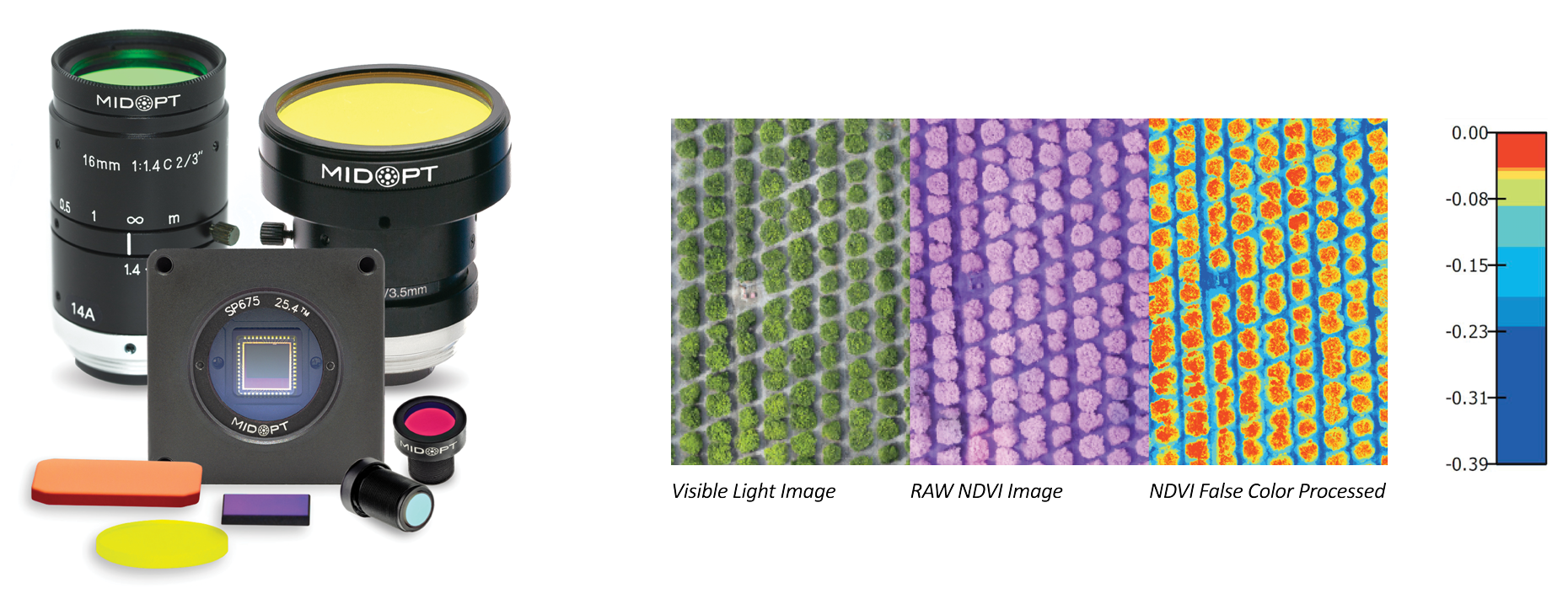
Bi725 RED EDGE BANDPASS FILTER
MidOpt’s Bi725 bandpass filter is designed for use in certain aerial vegetative health monitoring applications. This so-called “Red Edge” filter isolates the wavelength region where the most rapid change in reflectance occurs in foliage. When plants are stressed or dying, photosynthesis slows down or stops. IR wavelengths are absorbed, while more visible light–particularly red light–is reflected. The transitional 725nm band is uniquely affected by vegetative health changes and provides information relating to chlorophyll and nitrogen status used to distinguish thriving from stressed vegetation.
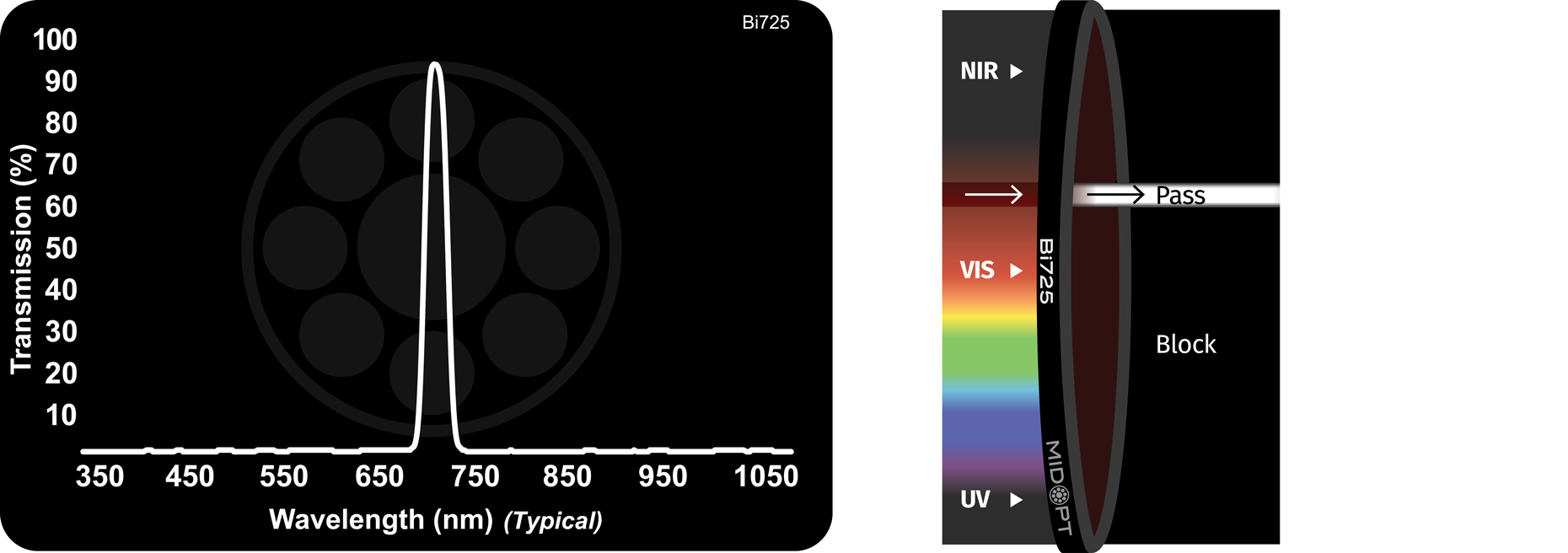
- Useful Range : 717-732nm
- FWHM : 25nm
- Tolerance : +/- 5nm
- Peak Transmission : ≥90%
- Surface Quality : 40/20
DB550/850 DUAL BANDPASS FILTER
The DB550/850 compliments the DB660/850 and DB475/850 filters. When modifying a single color camera by removing its IR blocking filter, incorporation of this filter in its place allows reflected near-infrared light (850nm) to be captured in the camera sensor’s red channel and reflected green light (550nm) to be captured in the sensor’s green channel (the blue channel is not used). Healthy vegetation will absorb (not reflect) green light and strongly reflect near-infrared light. Thus this information can then be used to apply a false color gradient to images to better highlight the contrast between regions of healthy vegetation vs. areas with stressed, diseased or no vegetation.
There are a range of vegetation indices used by the remote sensing and precision agriculture community, and while NDVI is probably the most common, each have their advantages. Any of the indices listed below can be considered when employing a single color sensor camera that has been converted using a DB550/850 filter. Information gathered can then be overlaid on vegetation maps to provide information used to make better crop management decisions.
Green Chlorophyll Index
CIg = (NIR / Green) – 1
Green Difference Vegetation Index
GDVI = NIR – Green
Green Normalised Difference Vegetation Index
GNDVI = (NIR – Green) / (NIR + Green)
Green Ratio Vegetation Index
GRVI = NIR / Green
Green Soil Adjusted Vegetation Index
GSAVI = [(NIR – Green) / (NIR + Green + 0.5)] * (1 + 0.5)
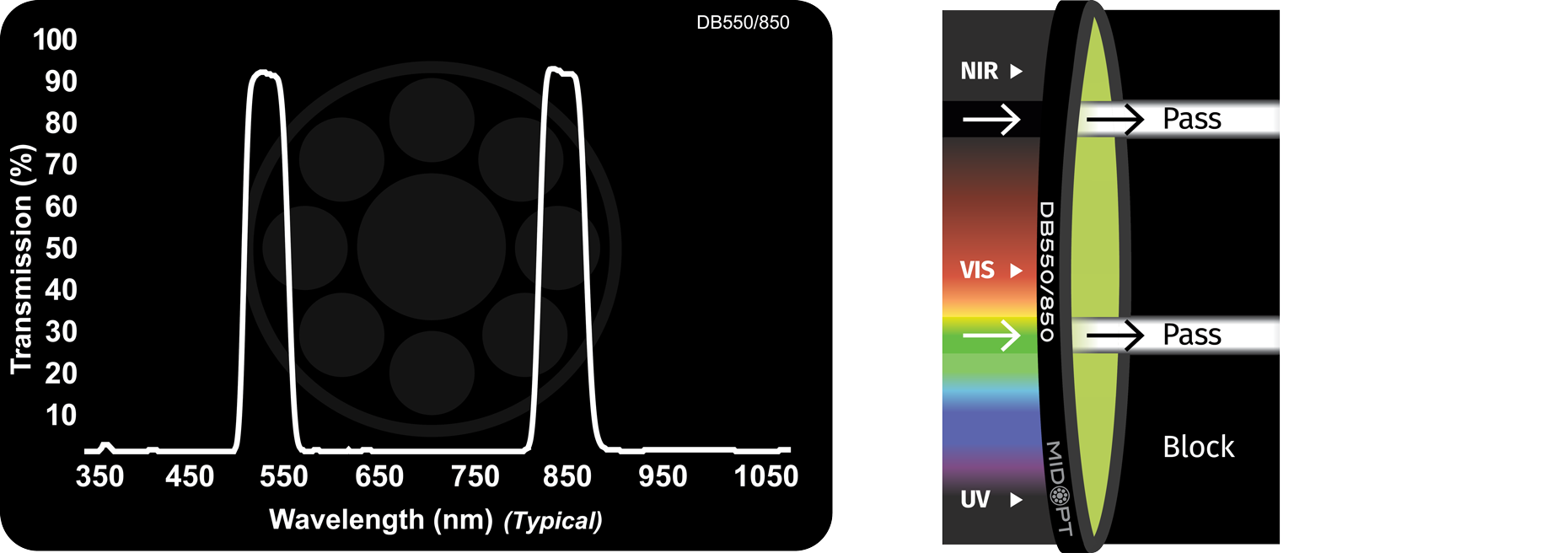
- Useful Range :535-565nm, 830-870nm
- FWHM :40nm, 50nm
- Tolerance : +/- 5nm
- Peak Transmission :≥85%
- Surface Quality : 40/20
TB475/550/850 TRIPLE BANDPASS FILTER BLUE + GREEN + 850nm NIR – COMING SOON!
TB475/550/850 Triple Bandpass Blue+Green+850nm NIR Filter, when mounted in converted consumer cameras used in aerial surveying applications, can help provide a more affordable, lightweight alternative vs. systems employing three or more cameras or sensors. Blue+Green+Near-IR Extended Normalized Difference Vegetation Index (ENDVI) data gathered for vegetative health monitoring can be used to provide similar, but spectrally different information as compared to traditional NDVI data. Soil background, differing atmospheric conditions and various types of vegetation can all influence the reflection of visible light somewhat differently. ENDVI analysis may, at times, be able to impart more accurate or reliable information regarding plant or crop health by additional leveraging of information in the blue portion of the spectrum. The formula used is:
ENDVI = [(NIR + Green) – (2 * Blue)] / [(NIR + Green) + (2 * Blue)]
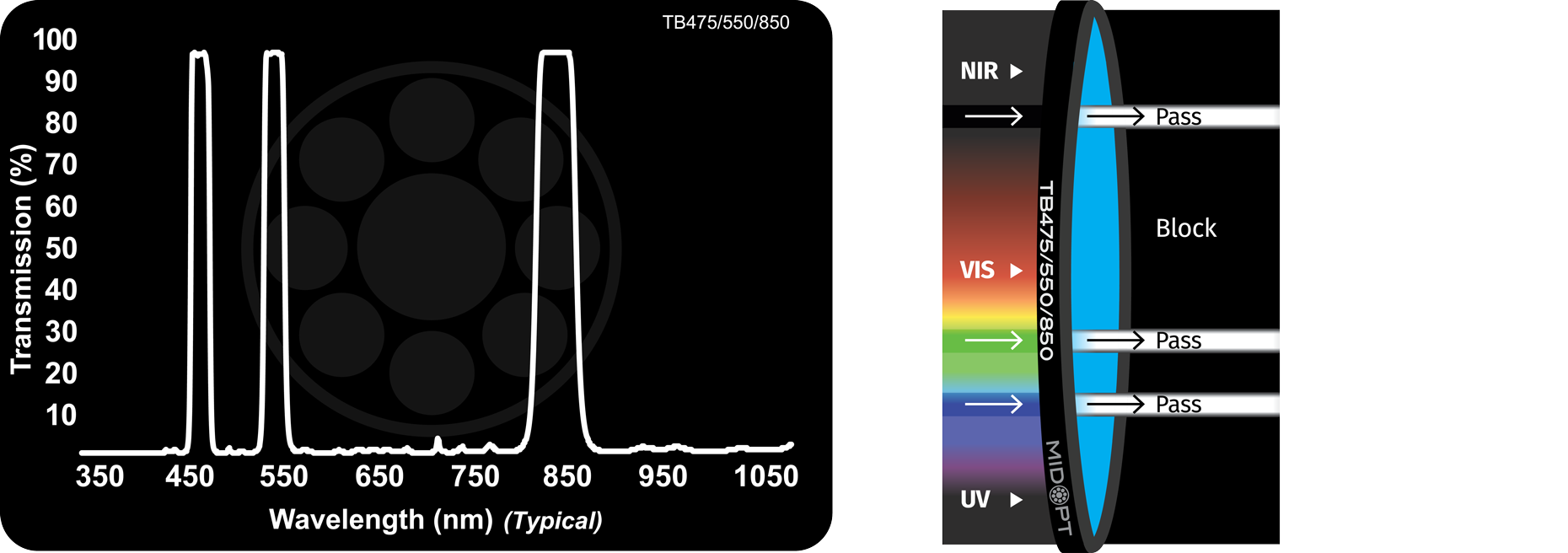
- Useful Range : 468-483nm, 543-558nm, 835-865nm
- FWHM : 20nm, 20nm, 40nm
- Tolerance : +/-10nm
- Peak Transmission : ≥85%
- Surface Quality : 40/20
TB550/660/850 TRIPLE BANDPASS FILTER GREEN + RED + 850nm NIR
MidOpt tripleband filters are primarily designed for aerial agriculture mapping and surveying purposes. Green+Red+Near-IR data is used for applications where Chlorophyll Vegetation Index (CVI) and other vegetative index monitoring is preferred. TB550/660/850 filters, when mounted in converted consumer cameras, can help in achieving a more affordable, lightweight alternative to systems using three or more cameras or sensors. Some of the formulas that are employed in these cases include:
Chlorophyll Vegetation Index
CVI = (NIR * Red) / (Green ^ 2)
Normalized Green
NG = Green / (NIR + Red + Green)
Normalized Near Infrared
NNIR = NIR / (NIR + Red + Green)
Normalized Red
NR = Red / (NIR + Red + Green)
Triangular Vegetation Index
TVI =0.5 * (120 * (NIR – Green) – 200 * (Red – Green))
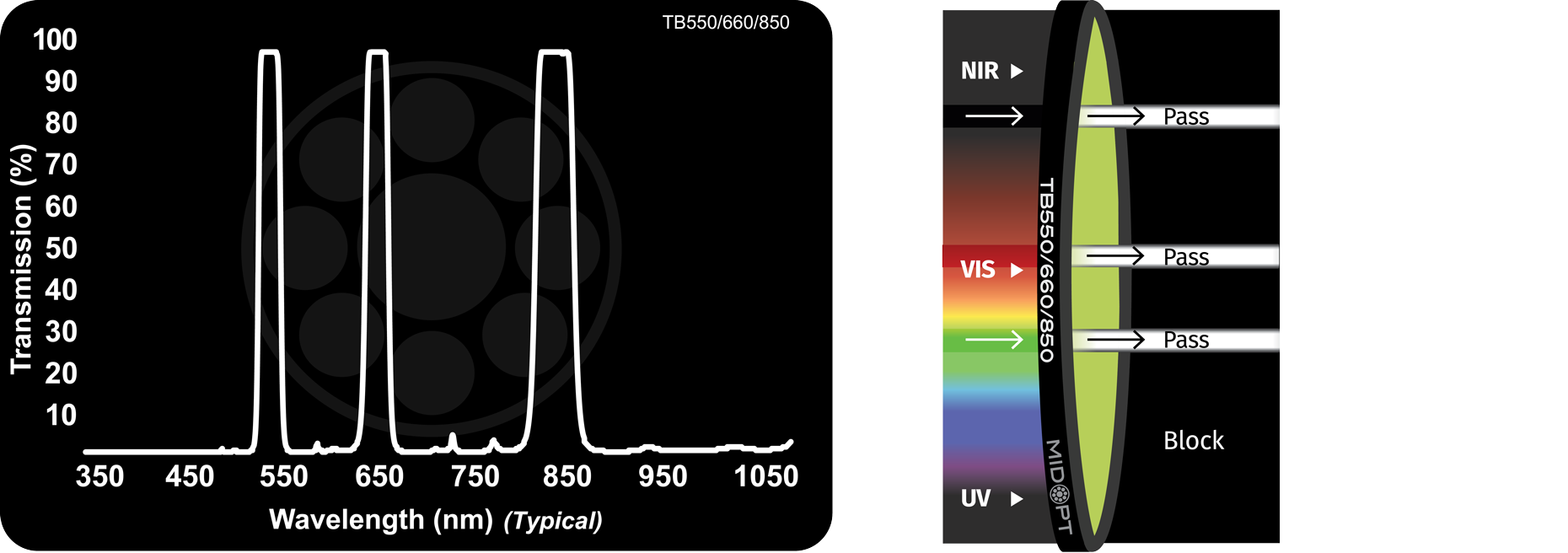
- Useful Range : 543-558nm, 653-668nm, 835-865nm
- FWHM : 20nm, 20nm, 40nm
- Tolerance : +/-10nm
- Peak Transmission : ≥85%
- Surface Quality : 40/20
NDVI / Agricultural Inspection
Applications that have traditionally relied on single wavelength filters used with multiple sensors or multispectral imagers are becoming more affordable than ever before. This cost reduction has made these technologies far more accessible, and the potential to benefit a large number of individuals and organizations is greater than it’s ever been in the past.
› Learn More

